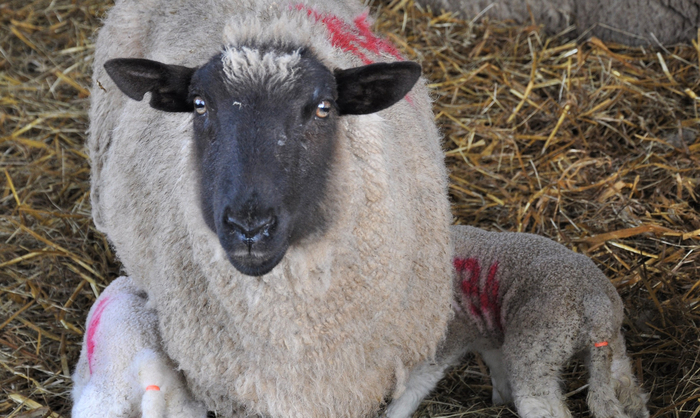The majority of lamb deaths happen within 48 hours of birth and each loss has been calculated to cost the farmer approximately £20-25 per lamb. Postnatal diseases occur largely due to a lack of hygiene awareness when preparing sheds for lambing. Simple steps to improving hygiene can significantly reduce lamb losses. If possible farmers should disinfect both sheds and equipment thoroughly between each ewe. Helen Ainsworth, from BASF, offers five points of advice for farmers when lambing this season.
“A focus on hygiene during lambing is one of the simplest and most economical ways to reduce lamb losses. Approximately a third of losses in lowland flocks occur in the neonatal period and most are the result of diseases that can be prevented by keeping the shed or lambing area clean and disinfected,” explains Helen. BASF offer Sorgene Xtra, a disinfectant that can be used for general hygiene, spraying or specific disease control dependent on the concentration used. To make the most of disinfectant and reduce diseases throughout lambing Helen suggests:
- Thoroughly disinfect all accommodation before the start of lambing. This is best achieved by pressure washing the sides and floors of the pens with a quality detergent before spraying with a disinfectant.
- Before lambing begins any sick ewes should be isolated and penned separately. Once lambing begins, any lambs that show signs of disease should also be separated and treated according to their symptoms. This will help to reduce contaminating other ewes and lambs during the lambing period.
- Bacteria, viruses and other micro-organisms are often present on clothing and boots. Farmers should be sure to wear clean overalls and dip boots in disinfectant to reduce the risk of introducing harmful diseases. Before entering the shed it is also good practice to wash hands with a bactericidal soap, especially when examining ewes or lambs and assisting with lambing.
- Any equipment that is being used in the shed should be kept in a solution of disinfectant when not being used. Farmers should use a clean bucket and a solution of 1:250 of disinfectant to store water bowls, teats and milk dispensers. This should be changed regularly to prevent the build-up of any bacteria.
- Pens should be mucked out and disinfected regularly. Ideally farmers should remove old bedding and replenish with generous amounts of fresh bedding every day.
Common postnatal causes of death in lambs include watery mouth and joint ill. Both can be prevented by lambing in a hygienic environment. “We have the tools to reduce lamb losses to an absolute minimum. Farmers can reduce losses by simply keeping their sheds and equipment clean by using a disinfectant properly this season,” concludes Helen.


